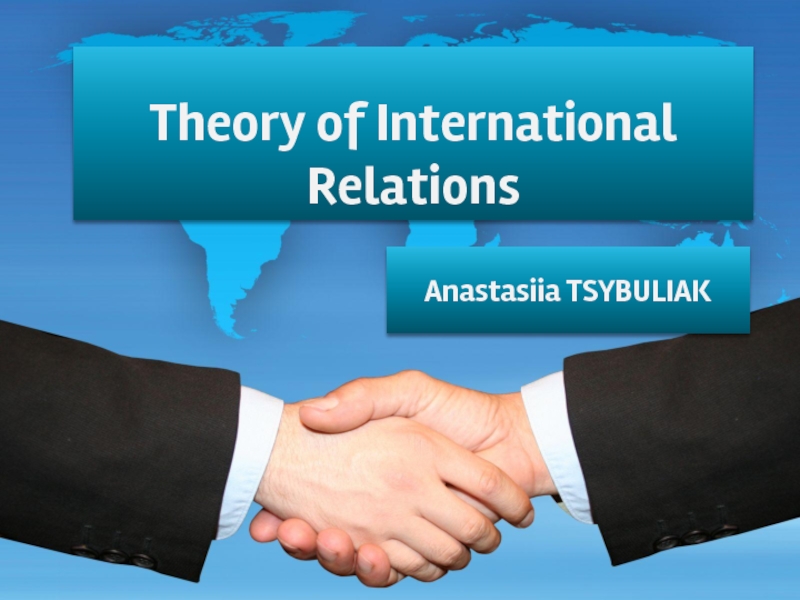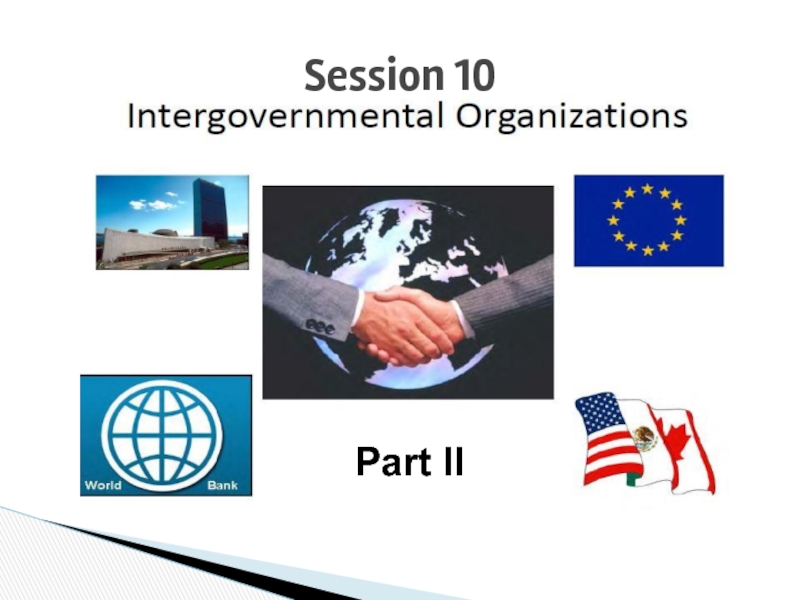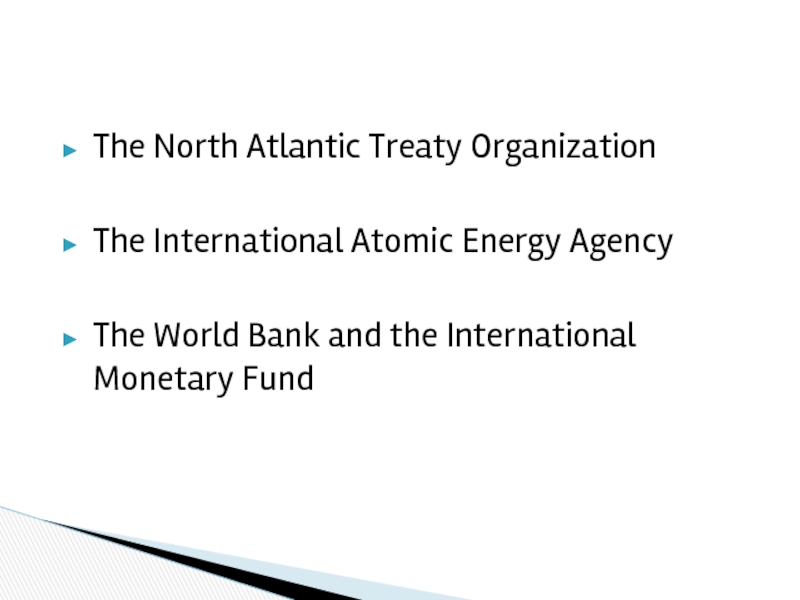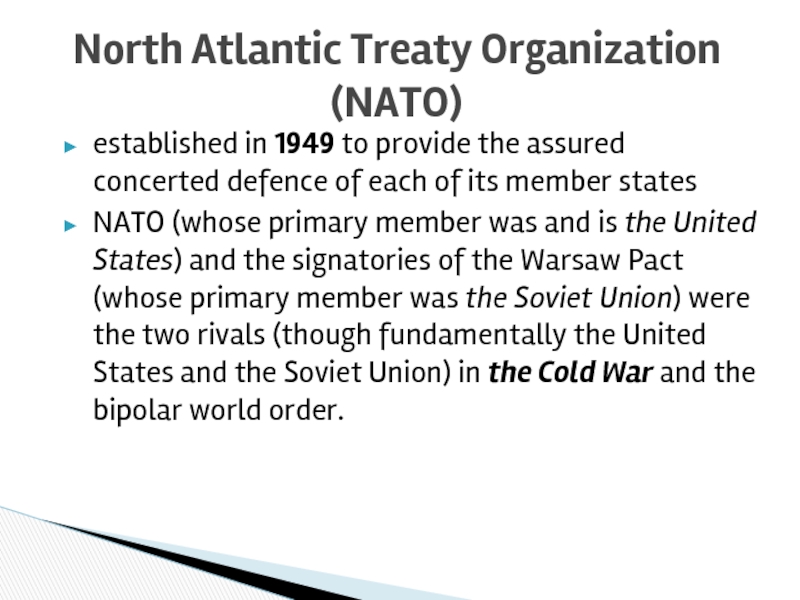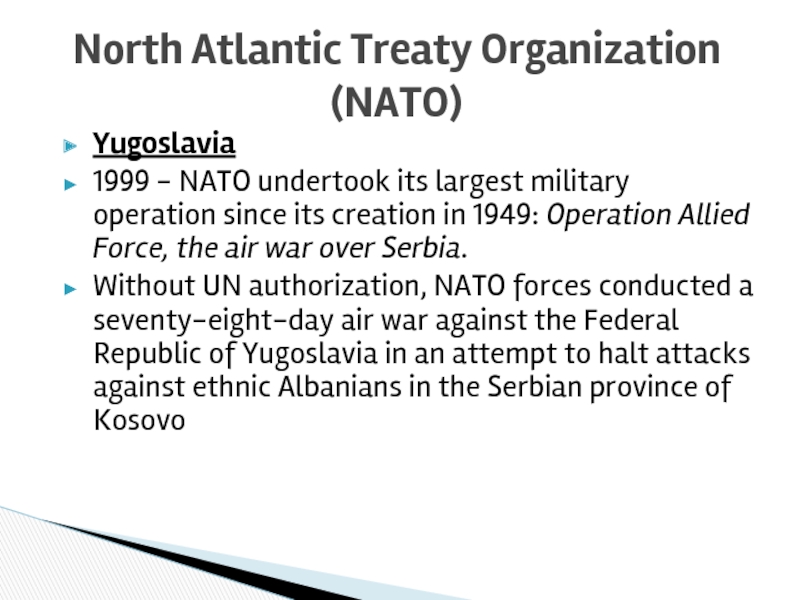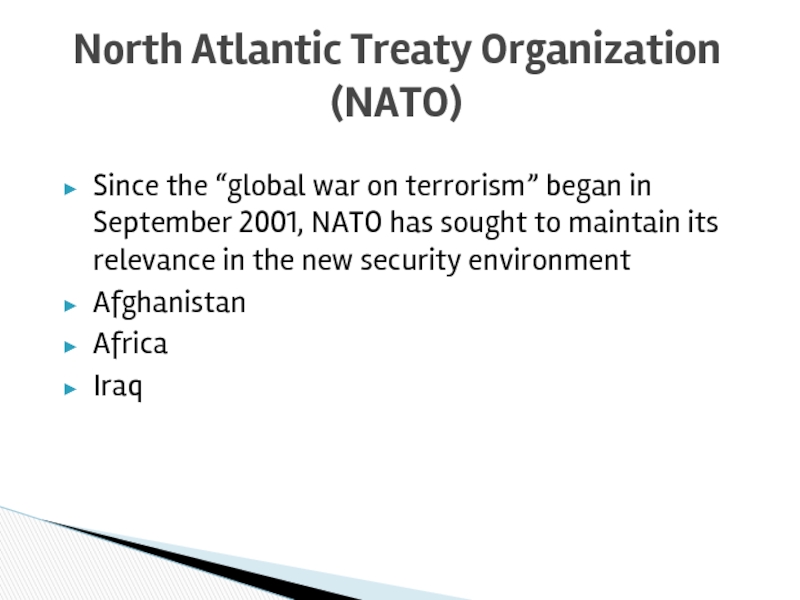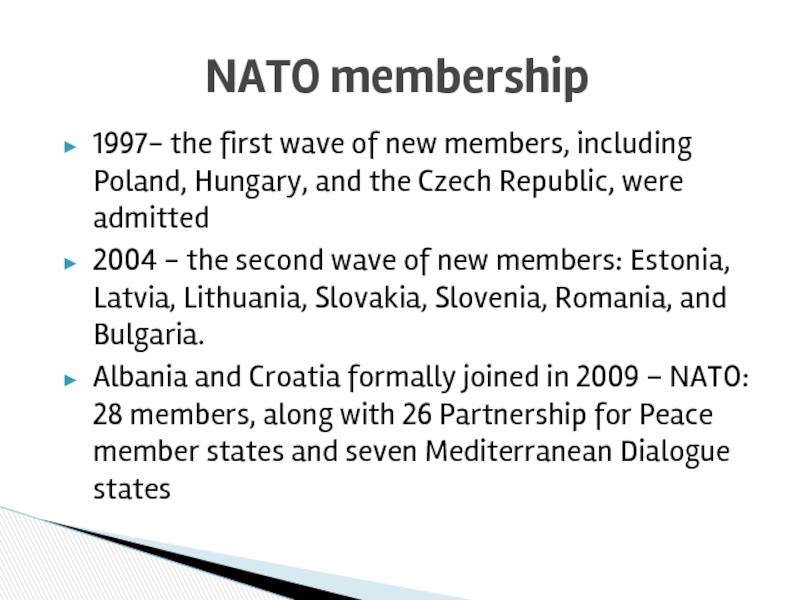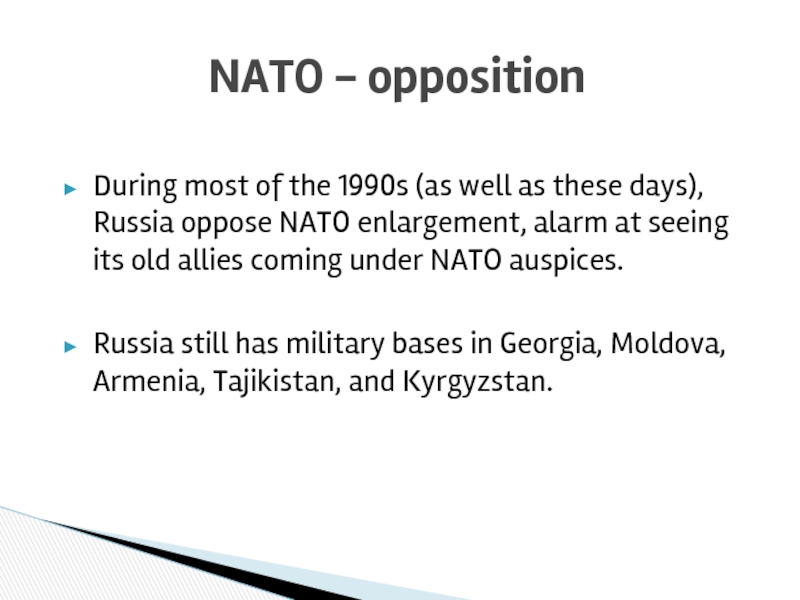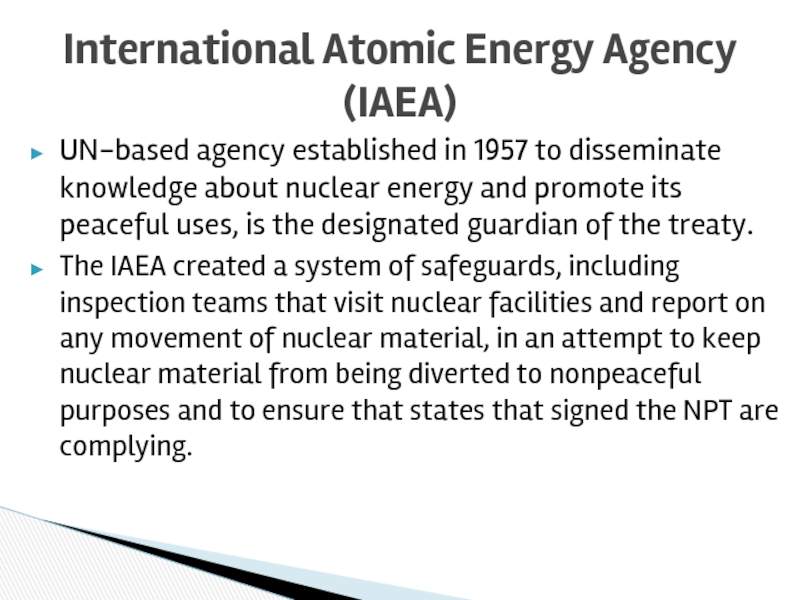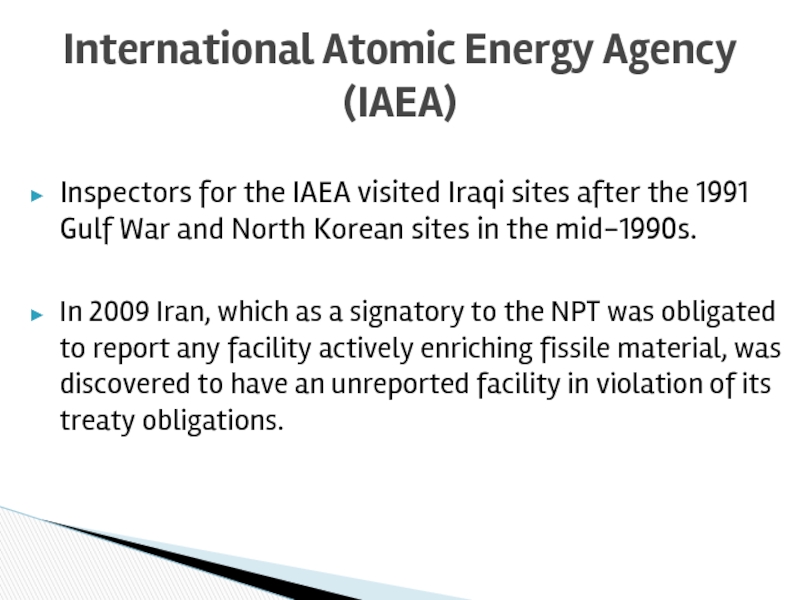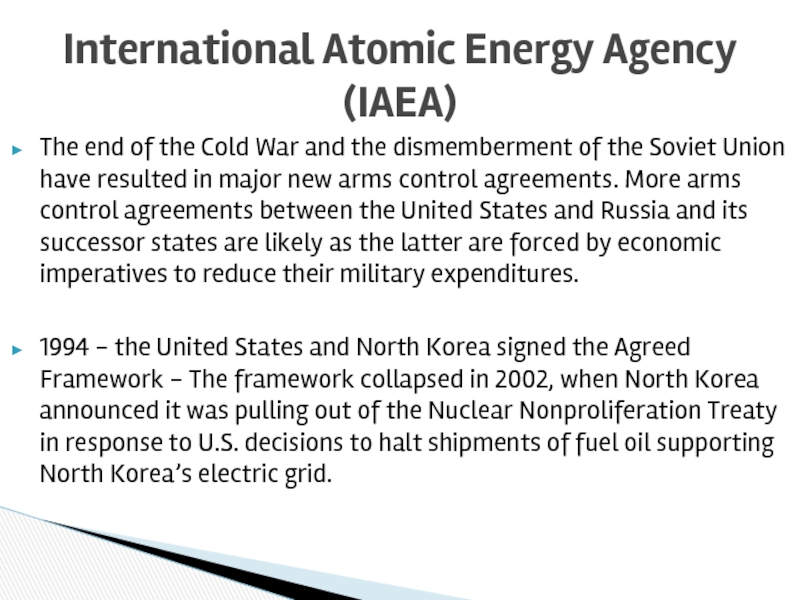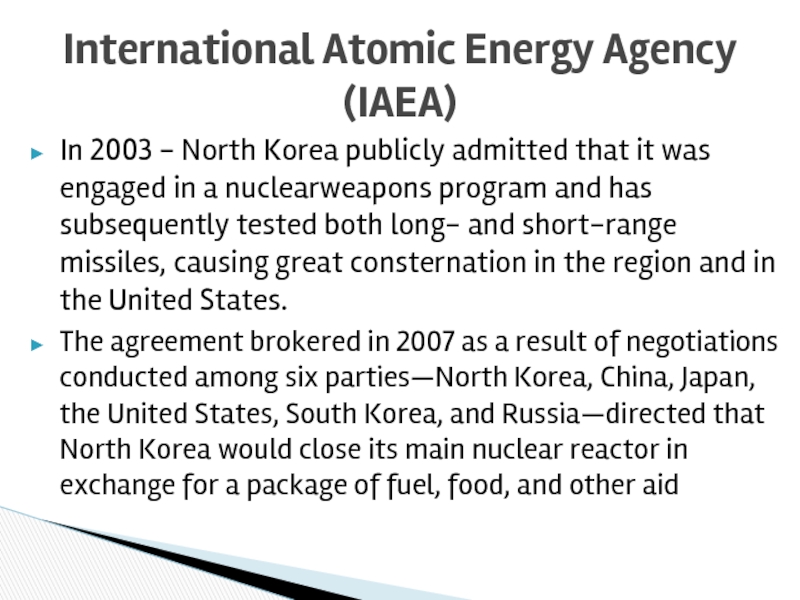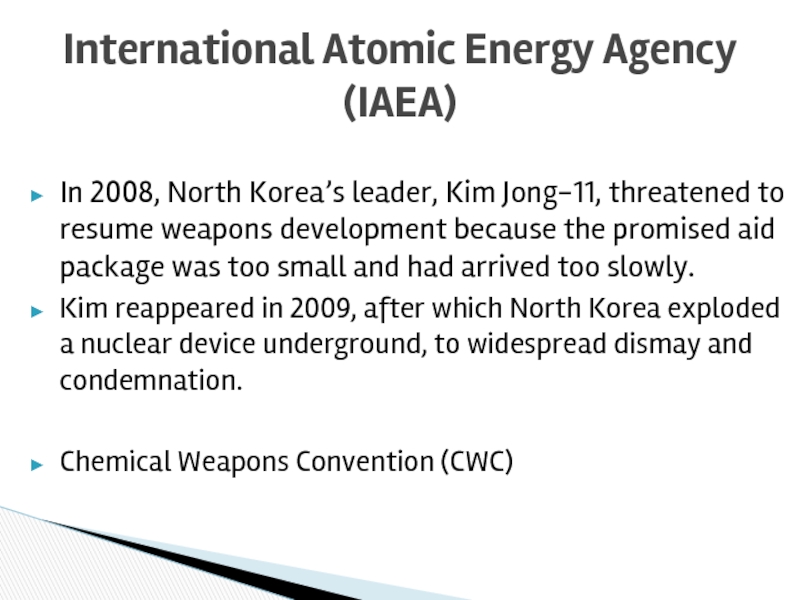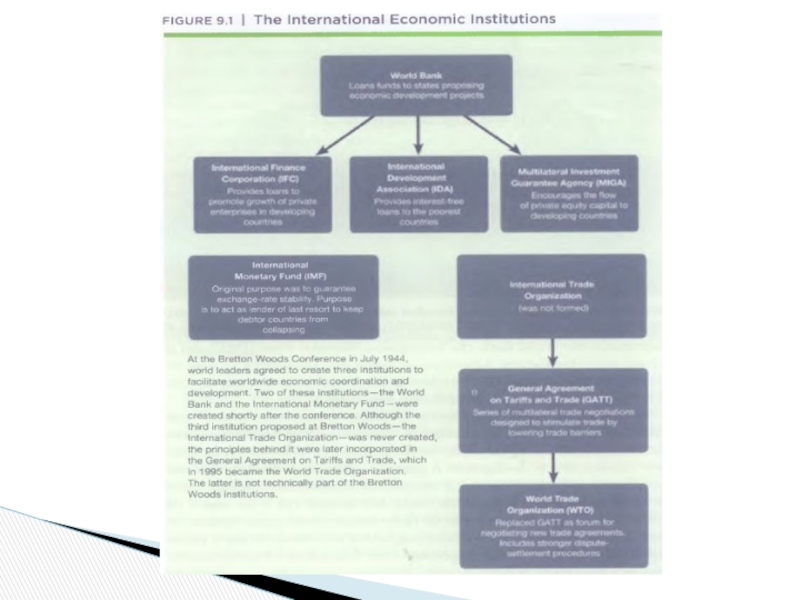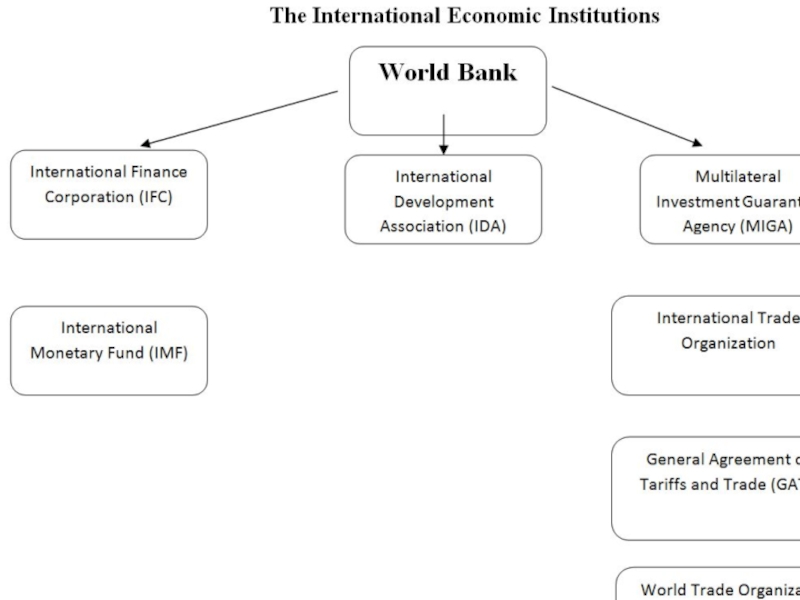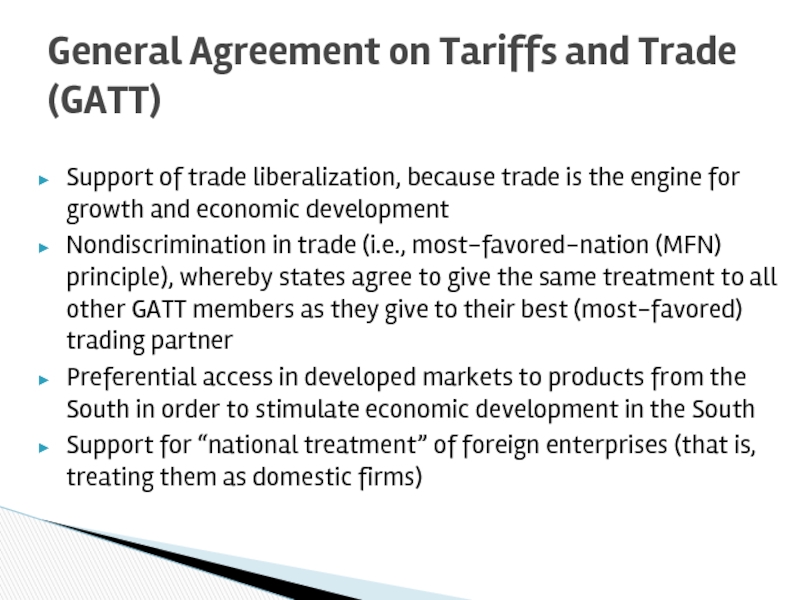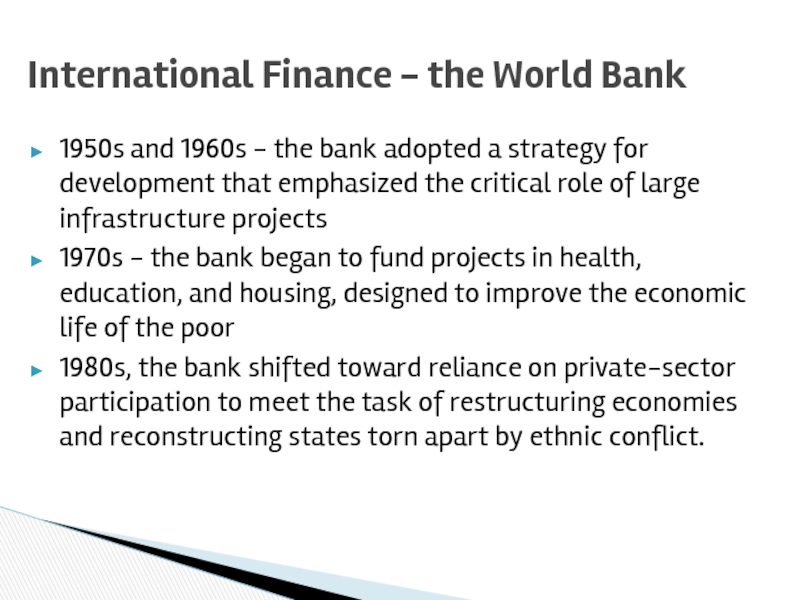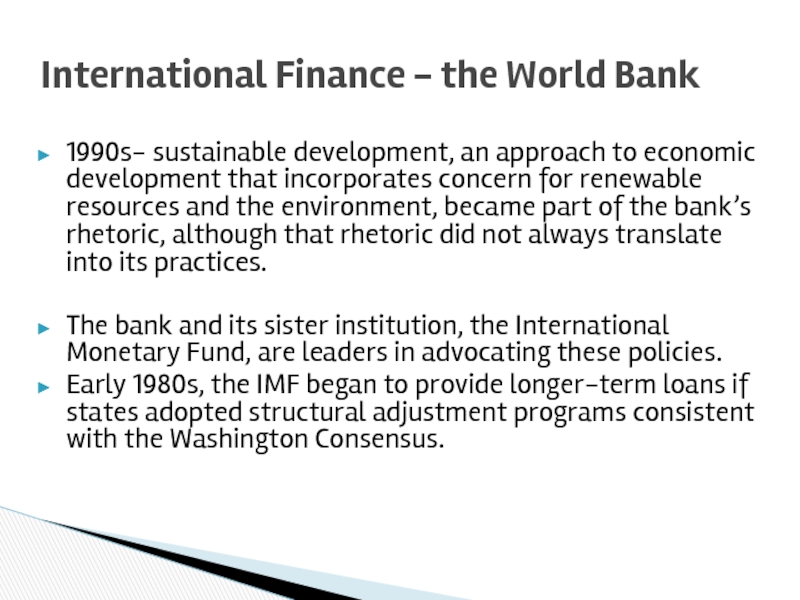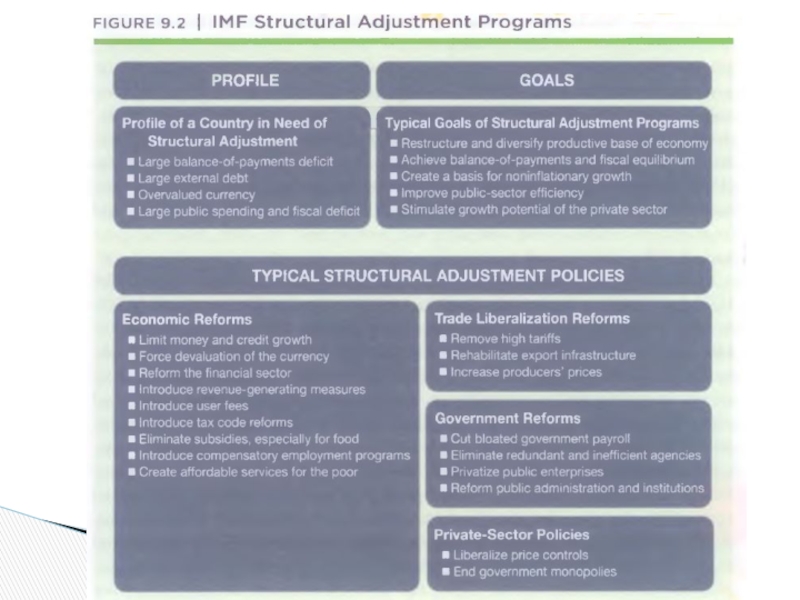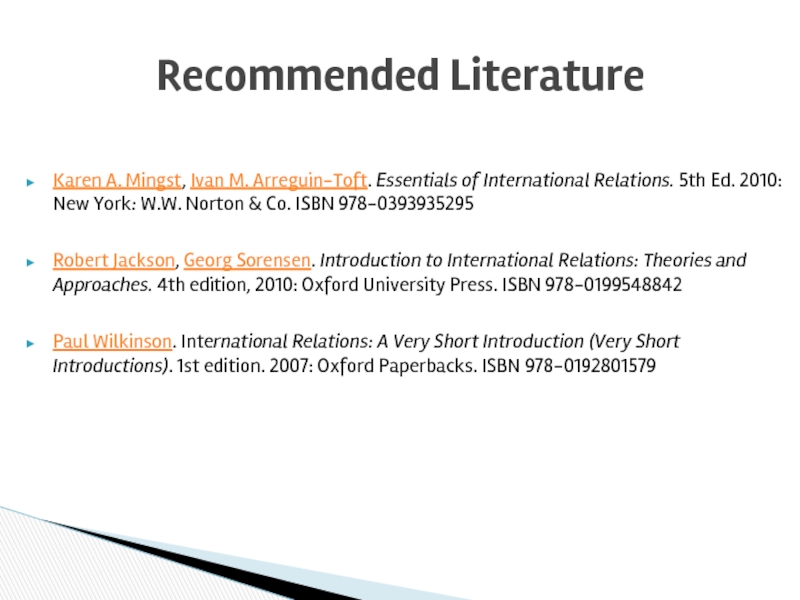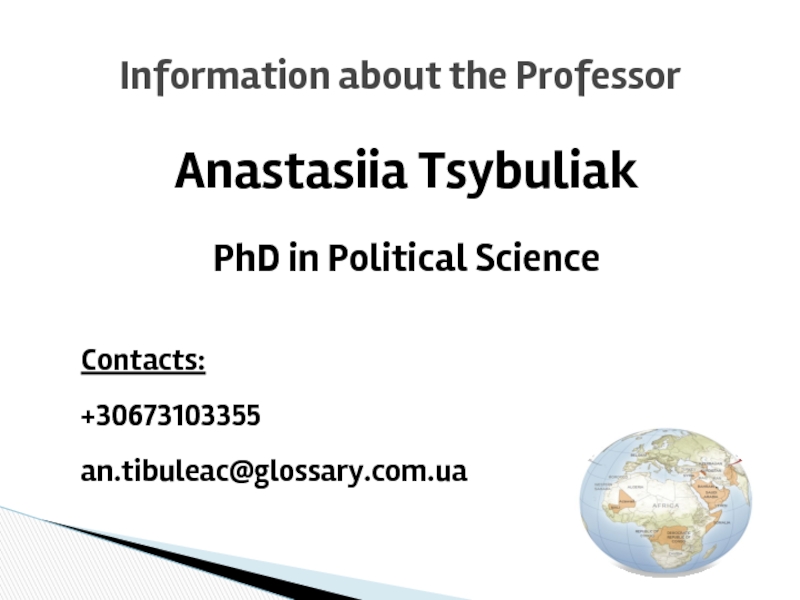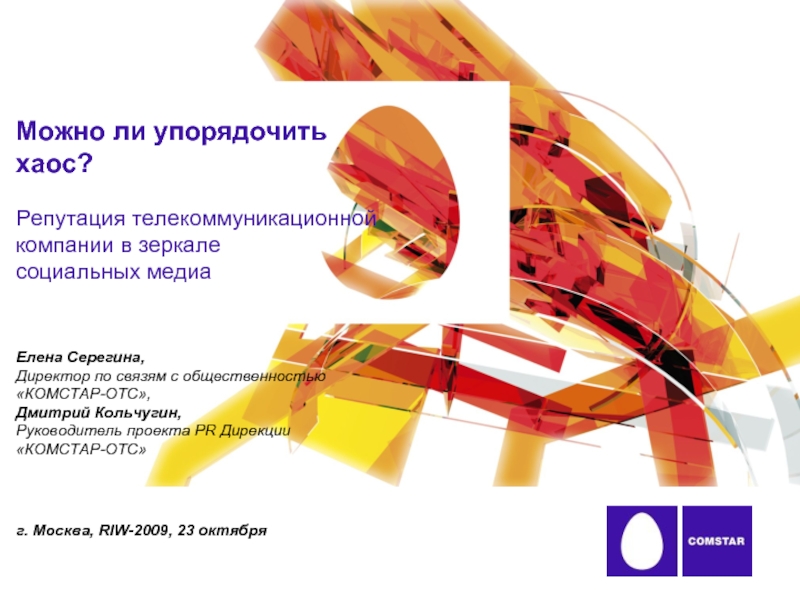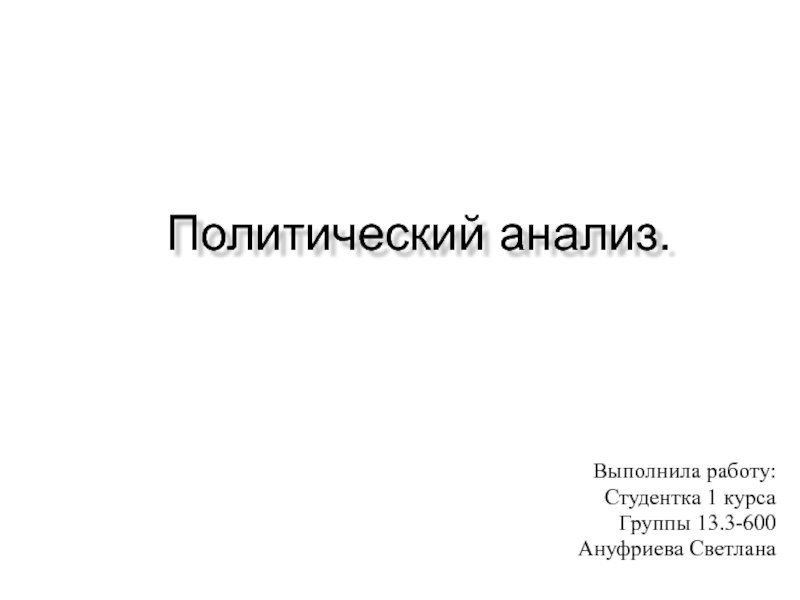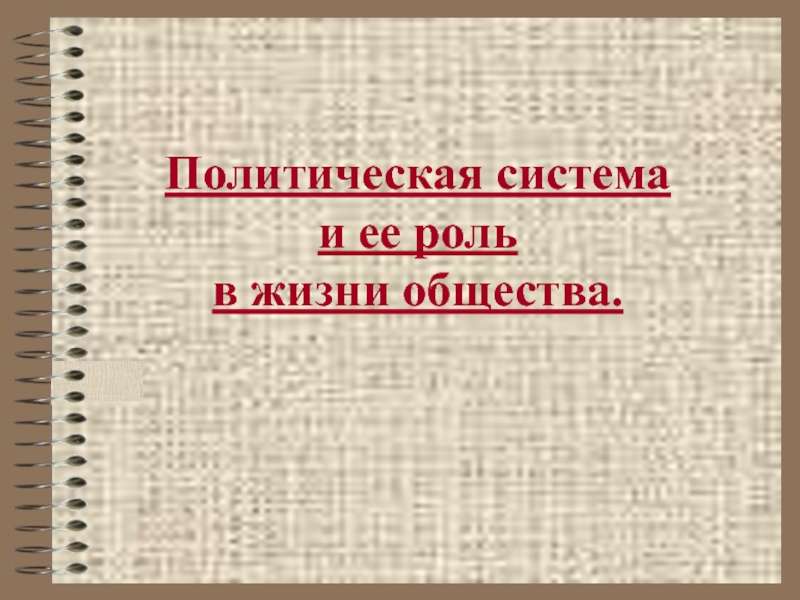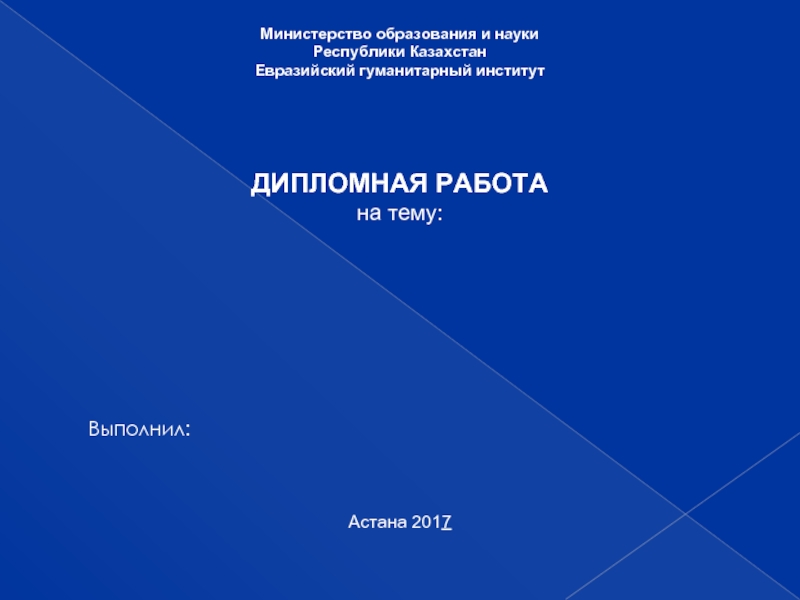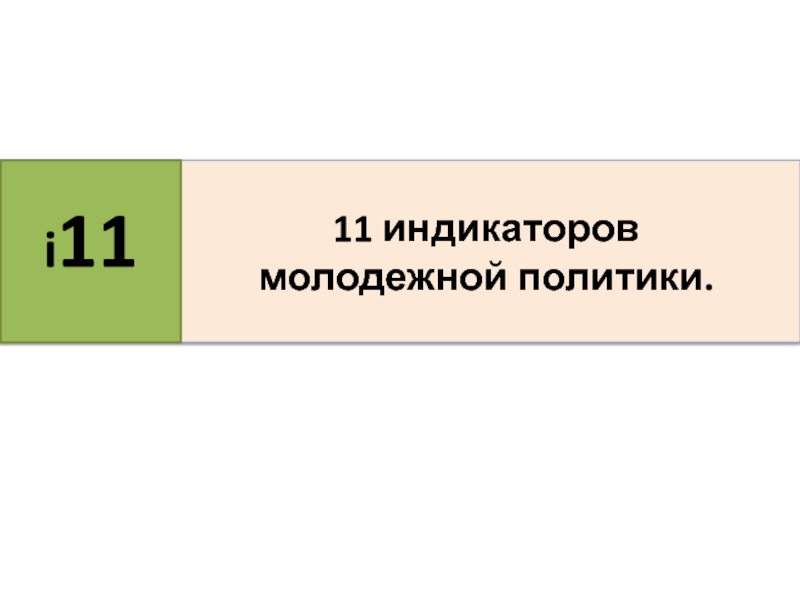- Главная
- Разное
- Дизайн
- Бизнес и предпринимательство
- Аналитика
- Образование
- Развлечения
- Красота и здоровье
- Финансы
- Государство
- Путешествия
- Спорт
- Недвижимость
- Армия
- Графика
- Культурология
- Еда и кулинария
- Лингвистика
- Английский язык
- Астрономия
- Алгебра
- Биология
- География
- Детские презентации
- Информатика
- История
- Литература
- Маркетинг
- Математика
- Медицина
- Менеджмент
- Музыка
- МХК
- Немецкий язык
- ОБЖ
- Обществознание
- Окружающий мир
- Педагогика
- Русский язык
- Технология
- Физика
- Философия
- Химия
- Шаблоны, картинки для презентаций
- Экология
- Экономика
- Юриспруденция
Intergovernmental Organizations презентация
Содержание
- 1. Intergovernmental Organizations
- 2. Session 10 Part II
- 3. The North Atlantic Treaty Organization The
- 4. established in 1949 to provide the assured
- 5. Yugoslavia 1999 - NATO undertook its largest
- 6. Since the “global war on terrorism”
- 7. 1997- the first wave of new members,
- 8. During most of the 1990s (as
- 9. UN-based agency established in 1957 to disseminate
- 10. Inspectors for the IAEA visited Iraqi
- 11. The end of the Cold War and
- 12. In 2003 - North Korea publicly admitted
- 13. In 2008, North Korea’s leader, Kim
- 16. Support of trade liberalization, because trade
- 17. 1950s and 1960s - the bank adopted
- 18. International Finance - the World Bank 1990s-
- 20. Karen A. Mingst, Ivan M. Arreguin-Toft.
- 21. Information about the Professor Anastasiia Tsybuliak PhD in Political Science Contacts: +30673103355 an.tibuleac@glossary.com.ua
Слайд 3The North Atlantic Treaty Organization
The International Atomic Energy Agency
The World Bank
Слайд 4established in 1949 to provide the assured concerted defence of each
NATO (whose primary member was and is the United States) and the signatories of the Warsaw Pact (whose primary member was the Soviet Union) were the two rivals (though fundamentally the United States and the Soviet Union) in the Cold War and the bipolar world order.
North Atlantic Treaty Organization (NATO)
Слайд 5Yugoslavia
1999 - NATO undertook its largest military operation since its creation
Without UN authorization, NATO forces conducted a seventy-eight-day air war against the Federal Republic of Yugoslavia in an attempt to halt attacks against ethnic Albanians in the Serbian province of Kosovo
North Atlantic Treaty Organization (NATO)
Слайд 6
Since the “global war on terrorism” began in September 2001, NATO
Afghanistan
Africa
Iraq
North Atlantic Treaty Organization (NATO)
Слайд 71997- the first wave of new members, including Poland, Hungary, and
2004 - the second wave of new members: Estonia, Latvia, Lithuania, Slovakia, Slovenia, Romania, and Bulgaria.
Albania and Croatia formally joined in 2009 – NATO: 28 members, along with 26 Partnership for Peace member states and seven Mediterranean Dialogue states
NATO membership
Слайд 8
During most of the 1990s (as well as these days), Russia
Russia still has military bases in Georgia, Moldova, Armenia, Tajikistan, and Kyrgyzstan.
NATO - opposition
Слайд 9UN-based agency established in 1957 to disseminate knowledge about nuclear energy
The IAEA created a system of safeguards, including inspection teams that visit nuclear facilities and report on any movement of nuclear material, in an attempt to keep nuclear material from being diverted to nonpeaceful purposes and to ensure that states that signed the NPT are complying.
International Atomic Energy Agency (IAEA)
Слайд 10
Inspectors for the IAEA visited Iraqi sites after the 1991 Gulf
In 2009 Iran, which as a signatory to the NPT was obligated to report any facility actively enriching fissile material, was discovered to have an unreported facility in violation of its treaty obligations.
International Atomic Energy Agency (IAEA)
Слайд 11The end of the Cold War and the dismemberment of the
1994 - the United States and North Korea signed the Agreed Framework - The framework collapsed in 2002, when North Korea announced it was pulling out of the Nuclear Nonproliferation Treaty in response to U.S. decisions to halt shipments of fuel oil supporting North Korea’s electric grid.
International Atomic Energy Agency (IAEA)
Слайд 12In 2003 - North Korea publicly admitted that it was engaged
The agreement brokered in 2007 as a result of negotiations conducted among six parties—North Korea, China, Japan, the United States, South Korea, and Russia—directed that North Korea would close its main nuclear reactor in exchange for a package of fuel, food, and other aid
International Atomic Energy Agency (IAEA)
Слайд 13
In 2008, North Korea’s leader, Kim Jong-11, threatened to resume weapons
Kim reappeared in 2009, after which North Korea exploded a nuclear device underground, to widespread dismay and condemnation.
Chemical Weapons Convention (CWC)
International Atomic Energy Agency (IAEA)
Слайд 16
Support of trade liberalization, because trade is the engine for growth
Nondiscrimination in trade (i.e., most-favored-nation (MFN) principle), whereby states agree to give the same treatment to all other GATT members as they give to their best (most-favored) trading partner
Preferential access in developed markets to products from the South in order to stimulate economic development in the South
Support for “national treatment” of foreign enterprises (that is, treating them as domestic firms)
General Agreement on Tariffs and Trade (GATT)
Слайд 171950s and 1960s - the bank adopted a strategy for development
1970s - the bank began to fund projects in health, education, and housing, designed to improve the economic life of the poor
1980s, the bank shifted toward reliance on private-sector participation to meet the task of restructuring economies and reconstructing states torn apart by ethnic conflict.
International Finance - the World Bank
Слайд 18International Finance - the World Bank
1990s- sustainable development, an approach to
The bank and its sister institution, the International Monetary Fund, are leaders in advocating these policies.
Early 1980s, the IMF began to provide longer-term loans if states adopted structural adjustment programs consistent with the Washington Consensus.
Слайд 20
Karen A. Mingst, Ivan M. Arreguin-Toft. Essentials of International Relations. 5th Ed.
Robert Jackson, Georg Sorensen. Introduction to International Relations: Theories and Approaches. 4th edition, 2010: Oxford University Press. ISBN 978-0199548842
Paul Wilkinson. International Relations: A Very Short Introduction (Very Short Introductions). 1st edition. 2007: Oxford Paperbacks. ISBN 978-0192801579
Recommended Literature
